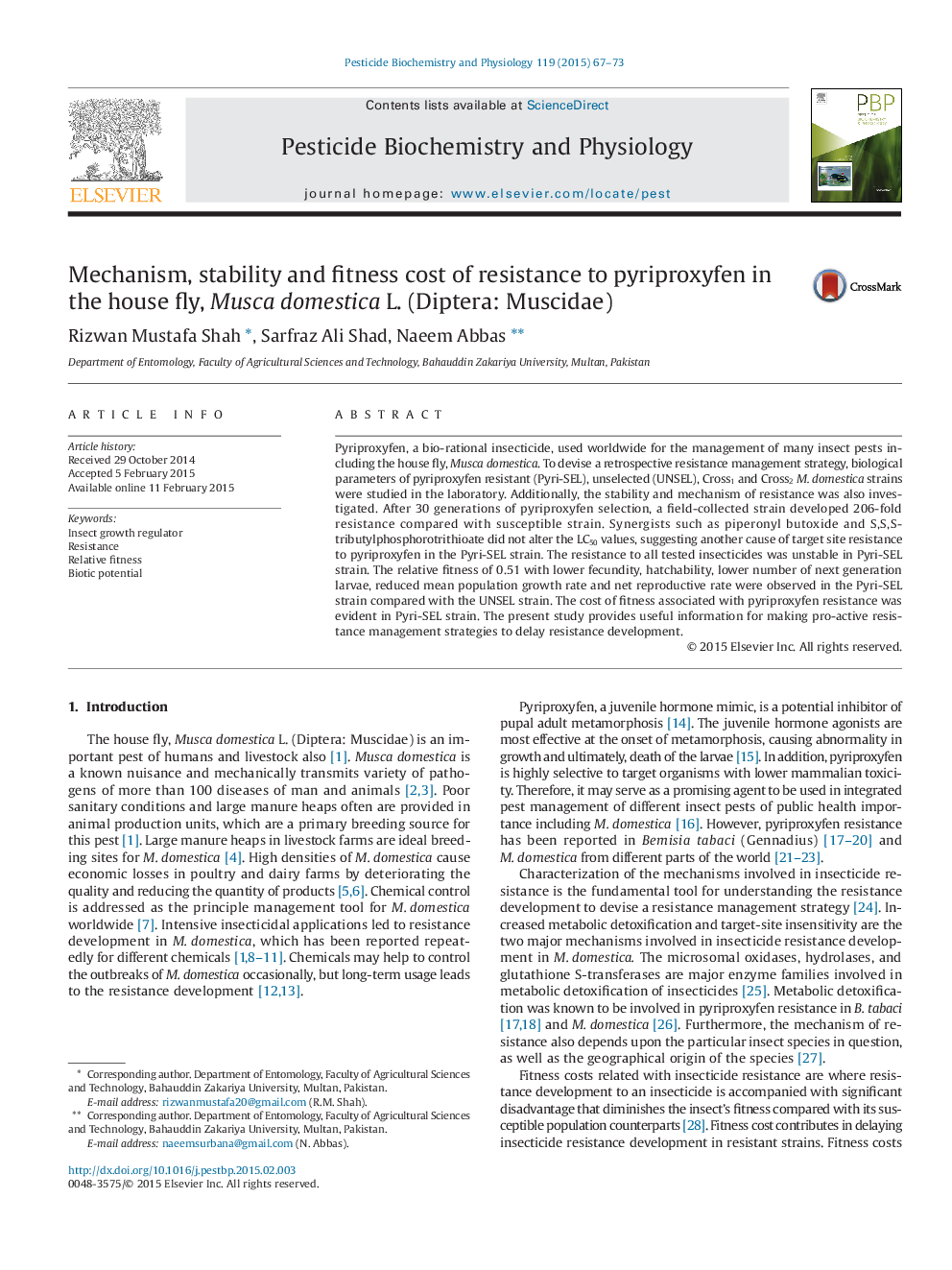| Article ID | Journal | Published Year | Pages | File Type |
|---|---|---|---|---|
| 2009149 | Pesticide Biochemistry and Physiology | 2015 | 7 Pages |
•Pyriproxyfen, a bio-rational insecticide, used widely for the management of Musca domestica.•After 30 generations of selection, a M. domestica strain developed 206-fold resistance to pyriproxyfen.•Synergism bioassay suggested another cause of target site resistance mechanism to pyriproxyfen in M. domestica.•Resistance to pyriproxyfen, methoxyfenozide, cyromazine and lufenuron was unstable in pyriproxyfen-selected strain.•The relative fitness of pyriproxyfen-selected strain was lower compared with an unselected strain.
Pyriproxyfen, a bio-rational insecticide, used worldwide for the management of many insect pests including the house fly, Musca domestica. To devise a retrospective resistance management strategy, biological parameters of pyriproxyfen resistant (Pyri-SEL), unselected (UNSEL), Cross1 and Cross2M. domestica strains were studied in the laboratory. Additionally, the stability and mechanism of resistance was also investigated. After 30 generations of pyriproxyfen selection, a field-collected strain developed 206-fold resistance compared with susceptible strain. Synergists such as piperonyl butoxide and S,S,S-tributylphosphorotrithioate did not alter the LC50 values, suggesting another cause of target site resistance to pyriproxyfen in the Pyri-SEL strain. The resistance to all tested insecticides was unstable in Pyri-SEL strain. The relative fitness of 0.51 with lower fecundity, hatchability, lower number of next generation larvae, reduced mean population growth rate and net reproductive rate were observed in the Pyri-SEL strain compared with the UNSEL strain. The cost of fitness associated with pyriproxyfen resistance was evident in Pyri-SEL strain. The present study provides useful information for making pro-active resistance management strategies to delay resistance development.
Graphical AbstractFigure optionsDownload full-size imageDownload as PowerPoint slide
